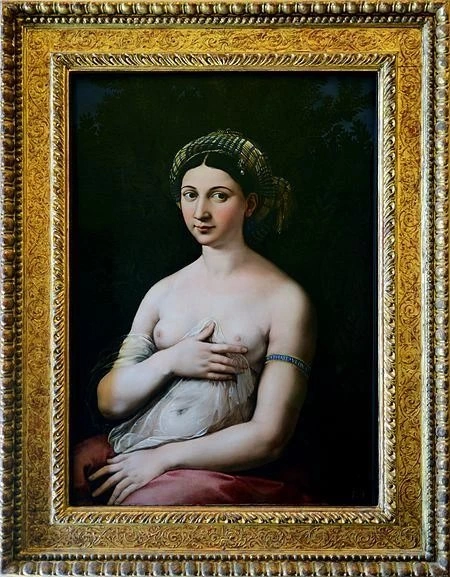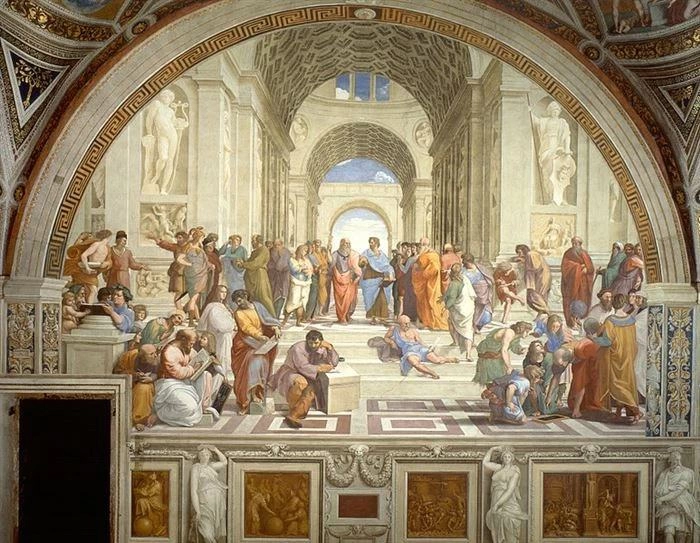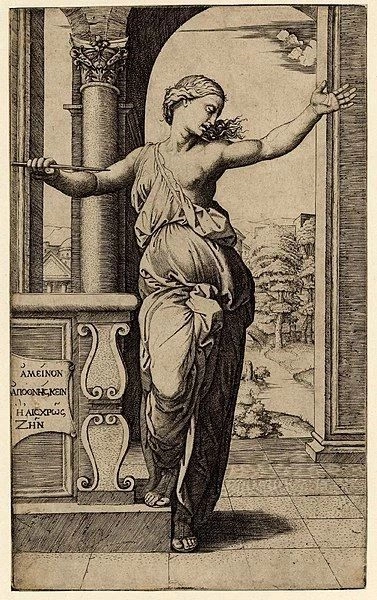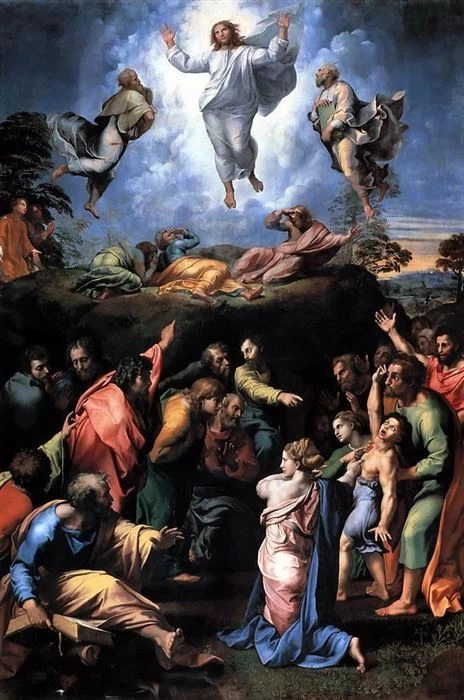Over 500 years ago, at the age of 37, one of the greatest painters in history packed up his brushes and shuffled off this mortal coil. From Vatican frescoes to modest wooden panels, he left behind a significant body of work in both size and importance, which included some of the most famous paintings of all time. Raphael really needs no introduction, and there is no doubt that the Italian artist and architect had an extremely profound influence on the art world that still resonates today, but do the pieces themselves still hold relevance in this modern world of ours?

Raphael, Self-portrait, between 1504 and 1506,
tempera on panel, Uffizi Gallery, Florence
Raffaello, as he is known in his native tongue, painted with immense beauty and grace, executing his work with painstaking care and attention to detail. There is a saying in Italy ‘piano, piano’ – which essentially means “softly, softly.” You do not rush things; you do not worry. Life is one slow, precise, and contented movement after another. And one only has to watch an artist at work with the medium of tempera to see the exact same philosophy. Each brushstroke is an act of love, and little by little, something breathtakingly beautiful comes into formation. Something almost ethereal in its smoothness and tone, that seems to seep into your eyes, diffused and gilded, like the sun slowly rising over mountain ranges. Raphael was a master of this technique, as is evident in a plethora of his works, including the mythological Vision of a Knight. That softness, that tenderness, exudes from every detail of the egg tempera on poplar panel.

La Fornarina, between 1518 and 1519, oil on wood,
Galleria Nazionale d’Arte Antica, Rome
There is also a great beauty to be found in Raphael’s subjects. One instantly thinks of La Fornarina, the artist’s portrait of his mistress, Margarita Luti, the daughter of a baker (hence the painting’s title). The young woman’s adoration for who is executing her portrait is more than evident, her demure gaze and coy smile holding more weight than that of a mere model. She is much more than that, and Raphael captured that clandestine love and longing with a master’s precision. La Fornarina possesses such duality, it is both heavenly pure and hellishly sensual. For south of that sweet smile she cups a breast while half-heartedly trying to veil it, and from this point downwards, her body forms a gentle declivity to where her other hand rests, fingers subtlety splayed, between her thighs.

The School of Athens, 1511, fresco,
Vatican Museums, Vatican City
Raphael’s magnum opus, The School of Athens, was painted as part of his commission by the Vatican to decorate the four rooms that are today known as the “Stanze di Raffaello”. The School of Athens holds breathtaking vastness, intricacy, and beauty, and exemplifies the High Renaissance and Raphael’s sheer talent for the painting of frescoes. He knew art and he knew architecture, and in 1514 he was given the title of architect of the new St Peter’s.

Raimondi engraving after drawing by Raphael, Lucretia, 1515,
British Museum, London
Raphael eventually had a workshop of around 50 assistants and pupils – possibly the largest workshop under the direction of an old master. The pupils of this workshop often carried out paintings and engravings from Raphael’s numerous drawings. And while it was, and still is, difficult for any artist’s work to stand up to his, the workshop helped to disseminate the master’s style, and, subsequently, his greater influence on the world of art. Engravings such as Marcantonio Raimondi’s Lucretia – taken from a drawing by Raphael, exemplify how his creative genius took on an omnipotent life of its own.

The Transfiguration, 1518-1520, oil on wood,
Pinacoteca Vaticana, Vatican City
The Italian High Renaissance master’s last painting was The Transfiguration, left partly unfinished at the time of his death. The painting depicts the classic transfiguration of Christ, but unlike most artistic representations of his metamorphosis, also combines elements from the following episode of the Gospels – like the healing of a possessed boy, which can be seen in the lower right corner. The Transfiguration perfectly encapsulates Raphael’s artistic development, and for several days after his death in 1520, the painting lay at the head of his catafalque. There is a great intensity to Raphael’s final piece, with Christ levitating afore tumultuous clouds, awash with the purest light, as below a panicked chaos ensues. Perhaps it is fitting that the transfiguration was the last subject to be painted by Raphael; there are certainly parallels that can be drawn to the artist’s own apotheosis into the annals of art history.
Now, over 500 years after his death, Raphael’s work remains as important as ever, and maybe even more so. Enough time has passed that we can look upon his pieces with fresh eyes and senses, finding excitement in the vividness of the colors, and serenity in the smoothness of the tones. The feeling of endless time that is found in his paintings, the eternal beauty that radiates from them, and the vast scope, stature, and influence of his oeuvre, are all things that are not so commonly found today – and not just in the world of art. They remind us to take our time with our creative endeavors, to form them slowly and lovingly, for the final result will have that much more impact. The School of Athens encourages us to challenge ourselves in the realm of knowledge and education, to treat the mind as a living tool that can be nurtured and nourished. And to gaze upon something so inherently gorgeous and delicate as La Fornarina, is a much-needed step away from the calamity and ephemerality of modern existence. It is a moment of pure aesthetical and spiritual tranquility, reminding us of the importance of love in our daily lives. And maybe there is no political statement to be made on current global affairs, but it speaks of the soul, and that is the most fundamental essence of humanity that there is.
Written by Benjamin Blake Evemy
Source: Mutual Art







